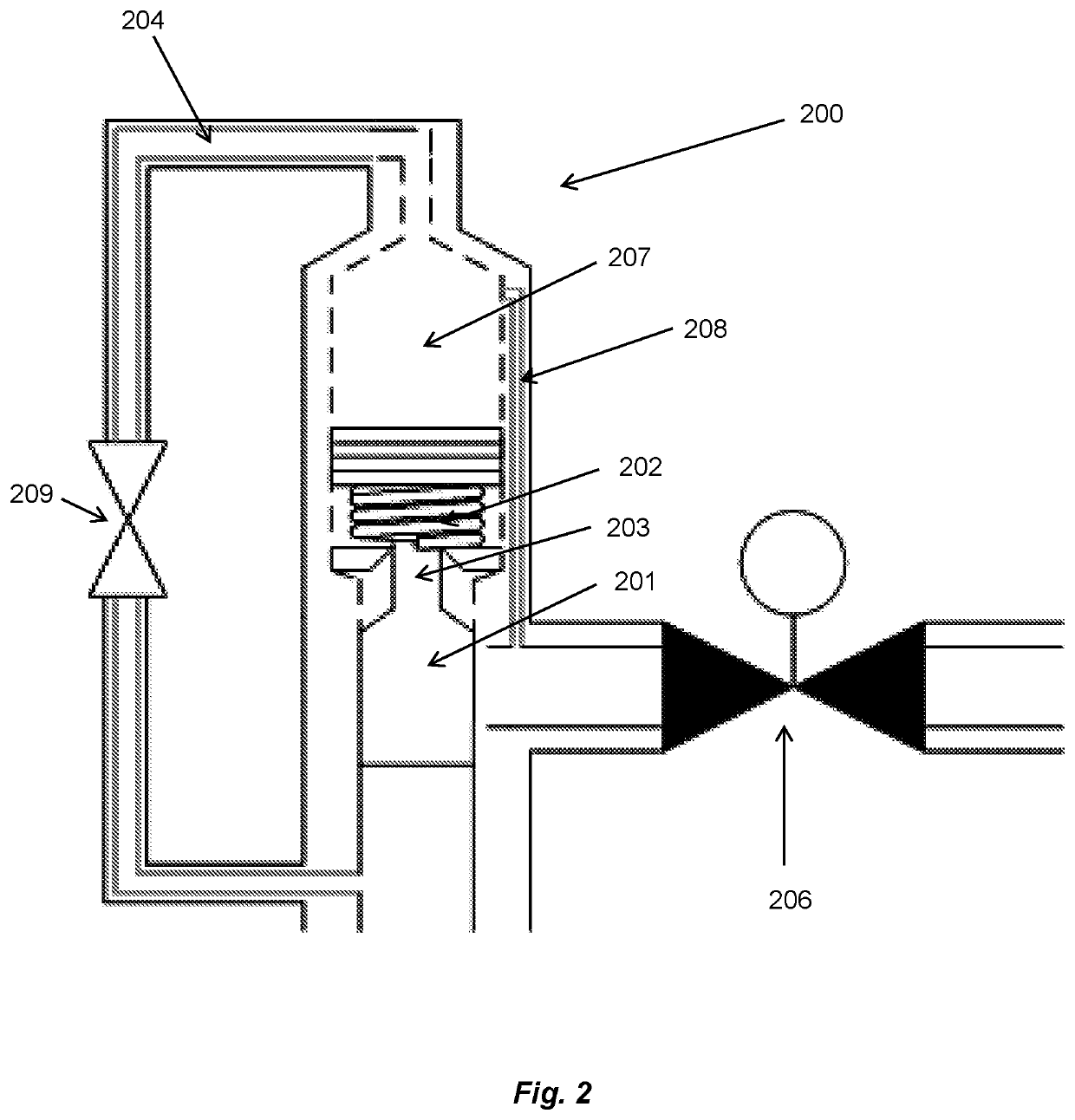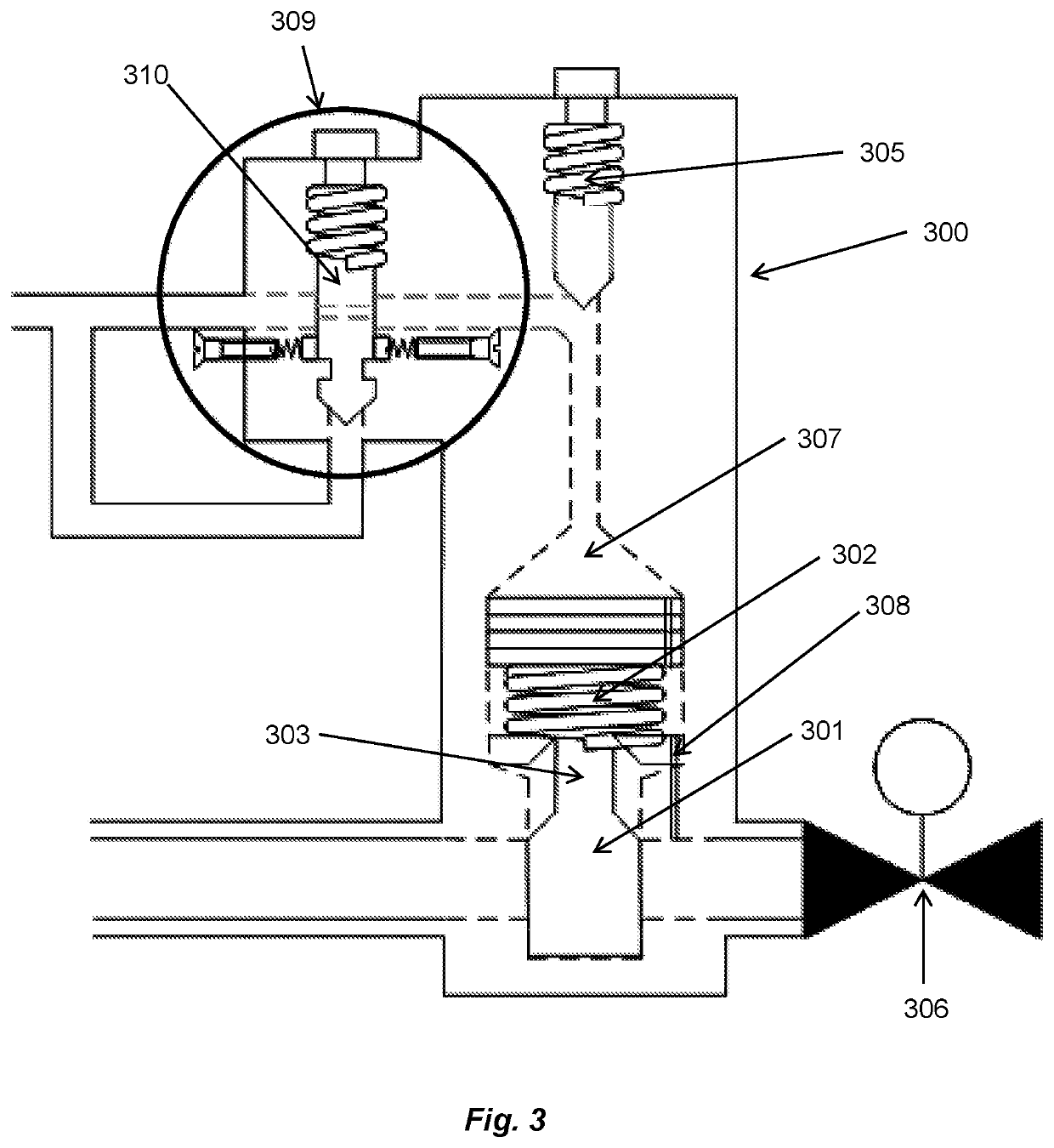Depressurisation valve
a depressurisation valve and nuclear reactor technology, applied in the direction of valve operating means/release devices, nuclear elements, greenhouse gas reduction, etc., can solve the problems of affecting the operation of the valve, the failure of the nuclear reactor, and the increase in the heat produced by the radioactive decay within the fuel rod of the reactor to a point at which the reactor is damaged, so as to achieve the effect of reducing the fluid resistan
- Summary
- Abstract
- Description
- Claims
- Application Information
AI Technical Summary
Benefits of technology
Problems solved by technology
Method used
Image
Examples
second embodiment
[0027]a PaD valve 200 removes the requirement for the pilot poppet valve; this embodiment is shown in FIG. 2. This configuration is similar in operation to that of the embodiment shown in FIG. 1. The main valve 201 is maintained in normal operation in a closed position within the circuit. It is maintained in this position by the fluid pressure from the coolant circuit passing through a pilot line 204 into a main chamber 207 at the back of a valve piston coupled to a valve stem 203. The fluid acts by applying a force on the valve piston and forces a compression spring 202 down, such that the main valve is maintained in the closed position. A blowdown line 208 is also provided to maintain fluid flow through the chamber. The blowdown line is narrower than the pilot line so that pressure in the main chamber is maintained. The pilot line is provided with secondary valve 209 for example this can be in the form of a magnovalve, which is thermally activated; this means that if the fluid tem...
third embodiment
[0029]a PaD valve 300 of the present disclosure is presented in FIG. 3. In this example the secondary valve 309 incorporates a high pressure latching isolation valve 310 mounted on a pilot line 304; this acts as a pressure sensing line. This line works rather than on a thermal set point for closure of the valve, but rather it shuts down upon the detection of high pressures. The latching valve can be set to close at any suitable pressure that is outside of the normal operation of the cooling circuit. For example, the latching valve could be set to close at 16.5 MPa. The valve could also be set to close at pressures higher than this, for example at about 16.6, 16.7, 16.8, 16.9 17, 17.1, 17.2 17.3, 17.4, 17.5 MPa or higher. Or lower, for example at about 16.4 or 16.3, 16.2, 16.1 or 16 MPa. During normal operation of the reactor the typical pressure of the coolant will cause the fluid to flow along the dotted line. This pressure also retains the poppet valve in the open position. If how...
PUM
 Login to View More
Login to View More Abstract
Description
Claims
Application Information
 Login to View More
Login to View More - R&D
- Intellectual Property
- Life Sciences
- Materials
- Tech Scout
- Unparalleled Data Quality
- Higher Quality Content
- 60% Fewer Hallucinations
Browse by: Latest US Patents, China's latest patents, Technical Efficacy Thesaurus, Application Domain, Technology Topic, Popular Technical Reports.
© 2025 PatSnap. All rights reserved.Legal|Privacy policy|Modern Slavery Act Transparency Statement|Sitemap|About US| Contact US: help@patsnap.com



